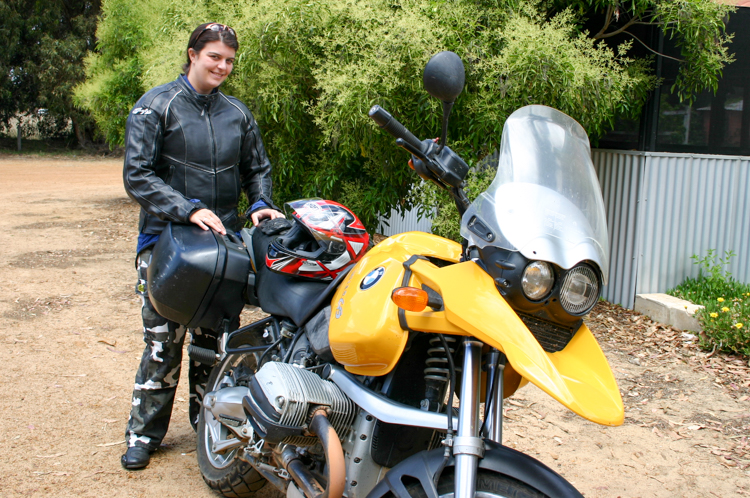We flew into Perth airport, intending to spend some time touring around the south-western corner of Western Australia. We had arranged to hire a motorcyce from Bike Round Oz, whose owner, Mark, picked us up and took us to his house in the Darling Range, where he installed us in a beautiful little converted railway carriage.
Fitted out in dark wood, with a plush red bed at one end, views across the range and a serene farm dam, it was a great place to relax after our flight. Add into the equation a friendly bunch of alpacas, black cockatoos wheeling overhead, and a bottle of gratis champagne, and we felt right at home.
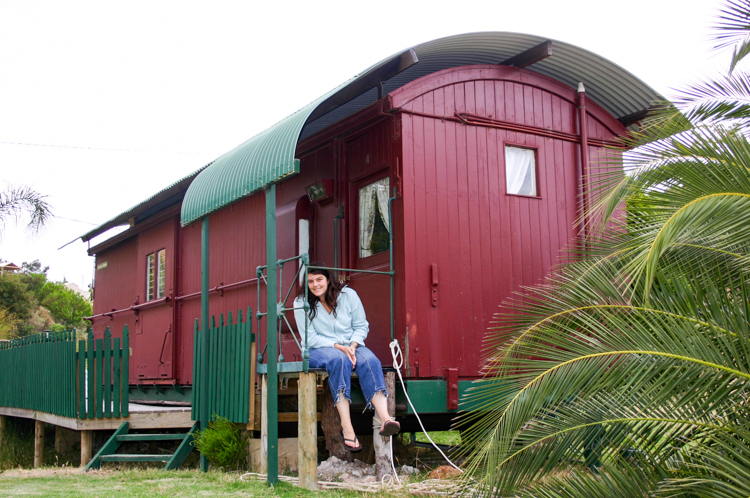
Outside our carriage in the Darling Range 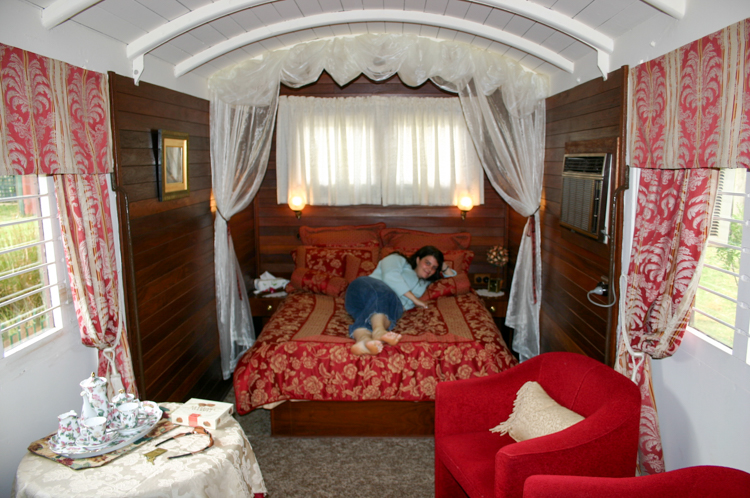
Home from home
The next morning, after a basket breakfast, we had a look at our ride, a yellow BMW GS1200, a little elderly but with impeccable credentials – it had already been around the world once. “She lost those cooling fins in Argentina…”
After packing a handful of stuff into the very small panniers, we set off southward down the Darling Range. The GS felt like a bit of a pig at first, but was very stable at speed, apart from an inclination to pull hard to the right, and fierce wind noise from the windshield.
The Gloucester Karri
Mining equipment dominated the scenery. Coming into Waroona, a parking lot for mining machinery was quite a shock; absolutely immense vehicles standing shoulder to shoulder in the red dirt, surrounded by cast-off caterpillar tracks. Lining the road near Capel were scrapyards containing enormous pieces of old machinery.
Every signpost along the way indicated a mine or a quarry, and the road was chock full of ore trucks which politely shuffled over to let us past. OK, we got the picture, this was mining country.
As we headed south, the machinery gave way to dairies, and then the cows gave way to trees. Regular trees gave way to big trees, and finally to the enormous timber that characterises the logging town of Pemberton.
Back in the early days of Pemberton’s history, the timber of choice was the Karri tree, a truly enormous species scattered around the local forests. Some of the tallest were spared to serve as lookouts for the ever-present danger of fire, and only these now remain.
The famous Gloucester Karri is sixty-one metres high. Embedded in the trunk are hundreds of steel spikes, and if you are particularly keen, you can use them to climb to the top.
Theres nothing to stop you slipping between the spikes if they are wet or you are careless, so the climb is quite exciting, but the views from the watch platform at the top are worth it, and it was easy to see how useful these trees were in spotting incoming bush fires.

Climbing the Gloucester Karri 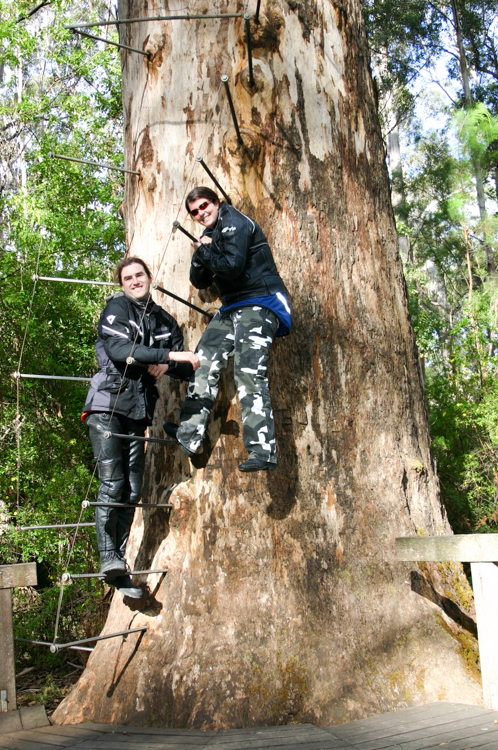
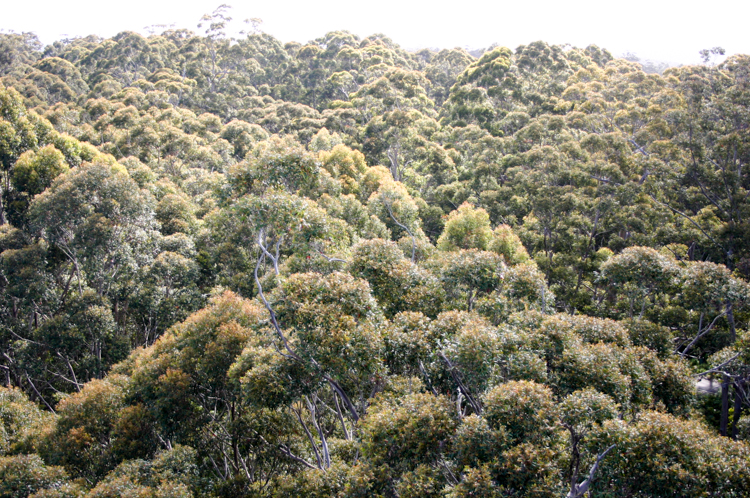
See anything burning? 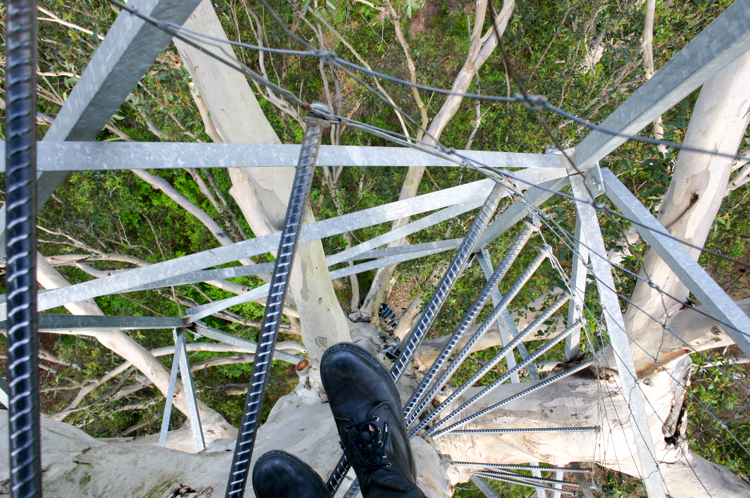
View from the scaffolding underneath the top platform
We spent a pleasant night at a vineyard B&B, and an equally pleasant morning chatting with the owner, a retired butcher, who cooked us some excellent sausages and answered all my presumably dumb questions about the rammed earth from which buildings hereabouts are constructed.
Much of the soil consists of marble-sized clay balls, and these are mixed with a little cement and poured into a form to build just about anything. The thickness and air-gaps make for a good insulating layer as well as a striking red colour that blends into the equally ruddy landscape.
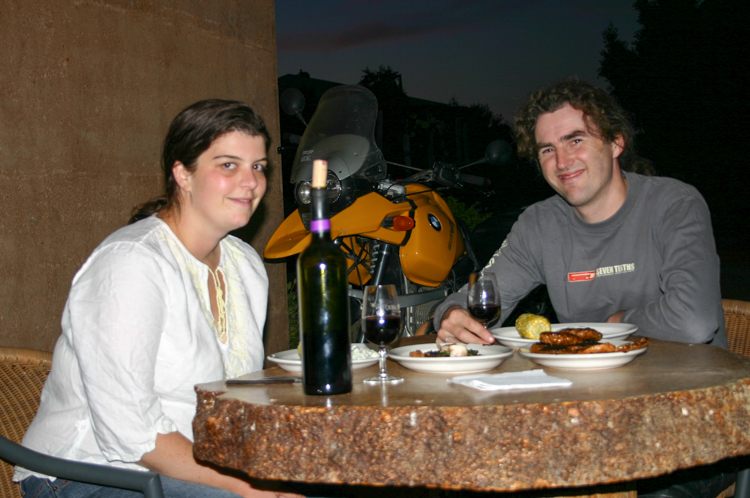
A bike, a vineyard, and Bronwyn’s cooking
The Bicentennial Tree
On the road again, it was time to check out another one of those Karri trees, this one even taller and much, much scarier to climb. The spikes were farther apart, and the trunk was devoid of branches to give even the illusion of safety.
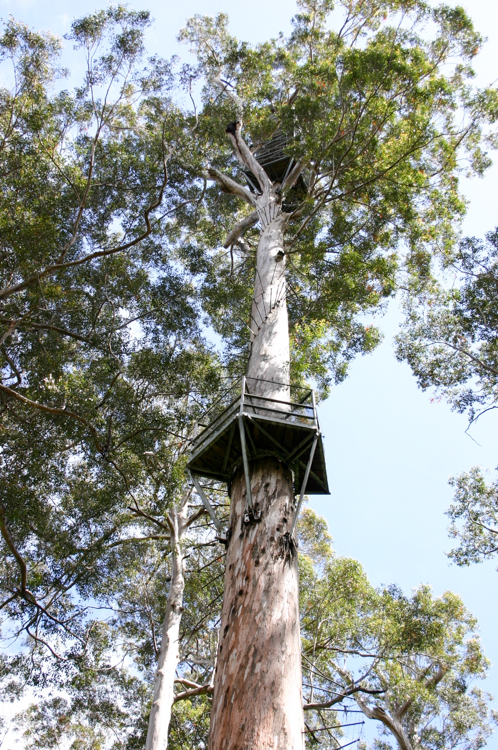
The Bicentennial Tree 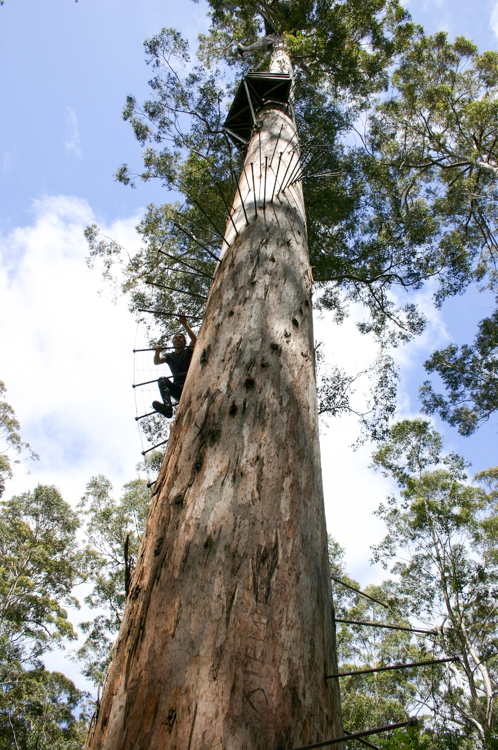
There’s Reinhard…
There was a midway-platform with a sign that pointed out “That was the easy bit. Reassess your situation now.” Luckily we had the place to ourselves; I wouldn’t have liked to meet anybody halfway up.

Hellooo down there 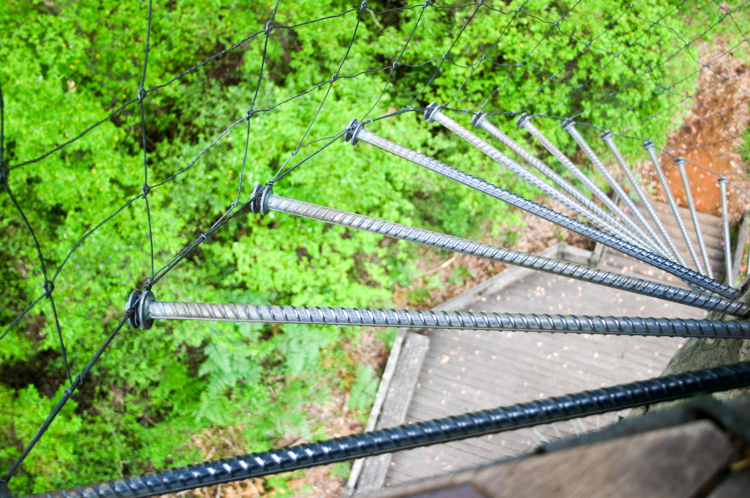
One short step for a man 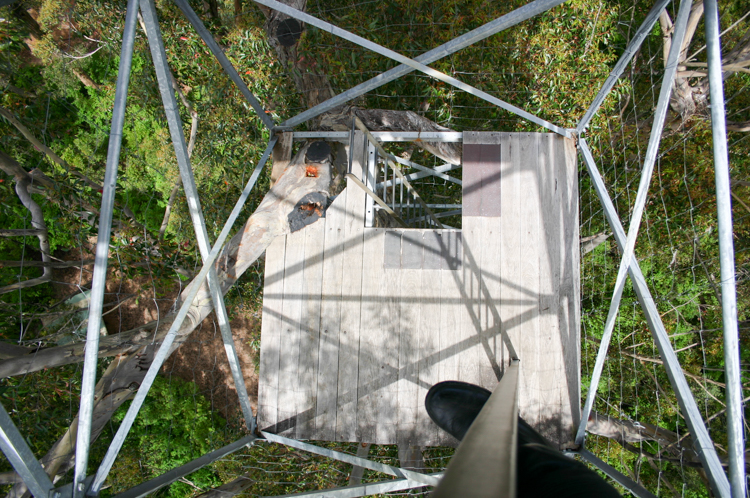
Somewhere near the top
